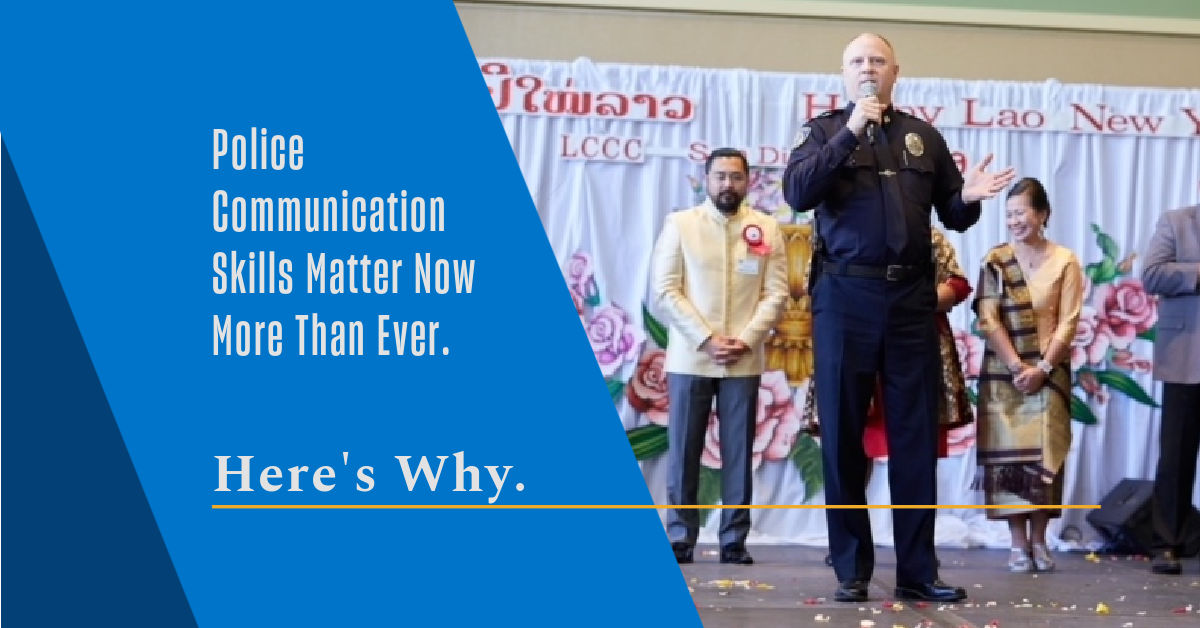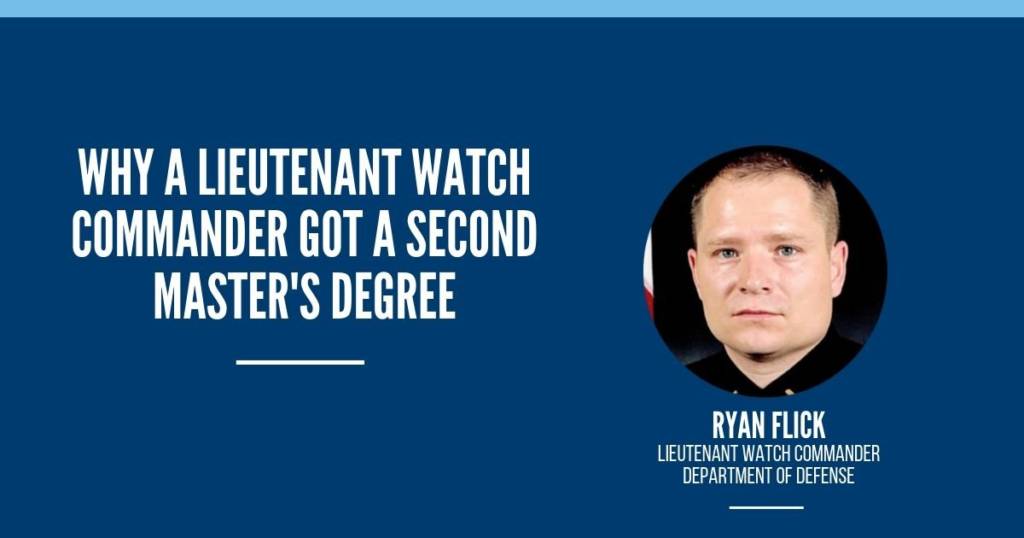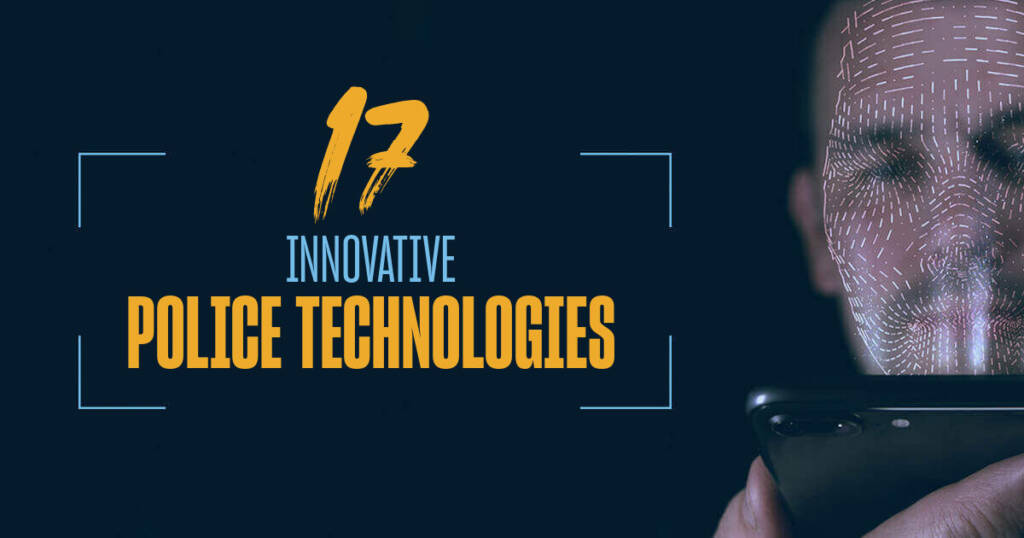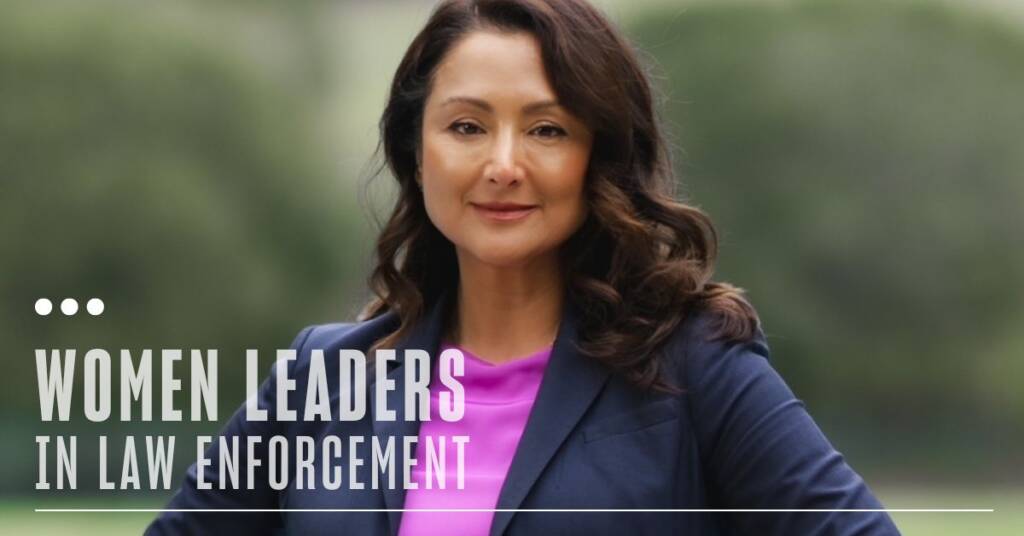Why Is Communication Important in Law Enforcement?
Perhaps today more than ever, communication matters. For police and law enforcement professionals, having the interpersonal skills necessary to effectively communicate with fellow officers, subordinates, higher-ups, community members, victims and their families, other departments and jurisdictions, and the court systems is critical to the mission of “protect and serve.” Police communication skills — needed to investigate crimes; de-escalate situations; build trust with communities; and write memos, reports and grants — are crucial for everyone working in law enforcement, and especially for those with leadership aspirations.
Many of the top officers and professionals in law enforcement have cited effective communication skills as a key ingredient to their success. That’s because the most successful law enforcement leaders understand how to communicate with people from diverse backgrounds under varying and often unpredictable conditions. They use communication to build trust, create transparency and foster an atmosphere of mutual respect and empathy, be it in the office, on the streets or in the courtroom.
[RELATED] Sharpen Your Communication Tools with a Law Enforcement Leadership Master’s Degree [Free eBook] >>
A Bartelby Research report titled “Effective Communication and Police Officers,” put it best: “Police officers could not serve the public effectively without good communication skills…Police officers can only succeed if they master communication, both social and professional, so that they can be comfortable with the public and get their jobs done.”
What Does Good Police Communication Look Like?
Using what are sometimes referred to as “tactical communication skills,” many police officers are trained to use a set of strategies in the field that can help diffuse situations and identify the root cause before they escalate out of control. In order for officers to effectively communicate with their community, earn their trust and get citizens to cooperate with their instructions, some effective communication strategies that are deployed include:
- The “80-20 principle,” which was originally used in sales, says that officers should spend 80% of their time listening and 20% talking, and then use what they hear to make a connection.
- Using body language to show the person that the officer is listening carefully.
- Asking many questions, and making simple requests, one at a time.
- Asking open-ended questions, especially questions that begin with “what” and “how.”
- Understanding how “emotional contagion” can benefit or hurt you. A person with mental illness may not understand all of the words an officer says, but the person will sense their tone and attitude. If the officer is shouting orders and appears tense, that increases the tension. Speaking slowly and calmly can help de-escalate the situation and convey to the person that the officer is not in a rush, that they have as much time as needed to converse and reach an understanding.
Breaking Down the Language Barrier for Better Communication
It can be hard enough to communicate with suspects and community members when they speak the same language, let alone when there is a language barrier involved.
As the diversity of citizens in the United States continues to grow, police departments are actively seeking officers and law enforcement professionals who possess second language skills – and many of these departments are willing to pay a premium for those skilled candidates. For example, police in San Diego, California, receive an additional 3.5% bonus for being bilingual, and the Salem, Oregon, police department offers a 5% pay incentive for bilingual speakers of Spanish, Russian, Asian dialects or American Sign Language.
Additionally, there are a number of language training programs geared specifically toward police officers, such as the free online language training courses offered through the National Institute of Justice.
Communication is Key in De-Escalation Strategies
Communication is also being heavily relied upon to help change police perceptions and improve community relations. In response to events that have taken place over the last few years and the high level of community–police tensions that currently exist in communities across the country, police departments are increasingly focused on de-escalation strategies when it comes to training officers, making arrests and interacting with community members. What many of the best chiefs and officers have long known is that communication, done right, works. “Sometimes when a person is in crisis, all they need is to be heard,” said Craig Stowell, Crisis Intervention Officer and Staff Instructor, with the Stearns County (Minnesota) Sheriff’s Office in an interview with the Crisis Prevention Institute.
De-escalation in policing is a technique that attempts to reverse the long taught and encouraged method of using force to control a situation. Instead, de-escalation attempts to diffuse a situation through peaceful means such as speaking calmly, showing empathy, and asking open-ended questions to engage people in a real dialogue rather than demanding answers and displaying power and authority.
The importance of de-escalation and educating officers about that skill is beginning to impact police departments around the country. Officer Stowell’s department in Minnesota now includes in-depth crisis prevention training in their classroom sessions, and Minnesota has begun awarding six hours of continuing education credit for licensed officers who complete these programs. The Chicago Police Department has also updated its de-escalation protocols and emphasized their commitment to finding non-violent and non-lethal outcomes during incidents. The department mandates annual de-escalation and use of force training for officers.
But learning how to communicate with diverse populations ranging from criminal suspects to victims, social service agencies, witnesses and other community members –some of who may be dealing with trauma, addiction, mental illness, poverty or any number of afflictions — is not easy. Communication techniques and skills, especially as they apply to modern police work, must be learned and practiced in order to be effective. That’s why professional training and experience combined with higher education can be so effective.
Tips for Law Enforcement Communication
In addition to practicing active listening, asking questions when needed and using the right body language, there are other steps law enforcement agencies and departments can take to improve and strengthen communication.
- Talk less and listen more. As Lexipol Co-Founder Gordon Graham explains, “In law enforcement, the ability to communicate is one of our most important tools,” emphasizing that both talking and listening are essential to being an effective law enforcement officer. “Take a few minutes to listen compassionately, emphatically to what they’re saying. And who knows — you might even hear some valuable information.”
- Be aware of potential language barriers. English is a second language for many in the United States, which is why it’s important for law enforcement officers to keep this mind and seek out a translator, if needed.
- Ask open-ended questions. While “yes or no” questions are important, consider adding in questions that begin with “what” or “how,” which may help you draw out more details or a more elaborate answer.
- Be mindful of body language and non-verbal cues such as body position, tone of voice, facial expression, eye contact, hand gestures and physical distance.
- Do not take any insults or any verbal attacks personally. Law enforcement officers are often faced with stressful situations, but they need to remain calm and poised — which is not to say they cannot show any signs of emotion.
- Be compassionate and empathetic. An effective law enforcement leader must be able to try and understand how someone else is feeling. It is also important to treat everyone with compassion and respect, regardless of whether they are fellow officers, victims, witnesses or community members.
- Understand the limits of verbal de-escalation. While verbal communication is typically the first step, it is important to understand when physical intervention is necessary, such as when immediate action is needed to prevent death or injury.
- Develop effective, consistent communication. It’s crucial to have protocols in place, regardless of the situation. This includes everything from figuring out the process for public alerts and internal communication to deciding when, and if, officers are allowed to speak with the media. Agencies and departments also need to consider through which channels — and how often — information is communicated.
- Prepare for crisis communication, which includes identifying a crisis team and a spokesperson ahead of time. This is especially important when it comes to fast-paced situations in which a variety of stakeholders and individuals need to be quickly contacted or alerted.
- Be proactive. Law enforcement agencies should continually examine policies and procedures and update them if necessary. It’s also important to communicate any updates to the appropriate parties (internal personnel, the public, etc.) This type of transparency and initiative will also help build trust with the community.
- Participate in specialized communication programs. One such example is the Crisis and Emergency Risk Communication (CERC) training from the Centers for Disease Control and Prevention. Both webinars and in-person training options are available.
- Engage in continuing trends and information. For example, the CERC Corner includes specifics on messaging and audience, crisis communication plans, community engagement and the role of social media, media and cell phone communication.
How a Master’s Degree Can Improve Communication for Law Enforcement
Many law enforcement professionals seek outside educational resources to help them develop and refine their communication and leadership skills. Programs like University of San Diego’s online M.S. in Law Enforcement and Public Safety Leadership include entire graduate-level courses on topics such as “Communication Skills for Law Enforcement Leaders,” and “Law Enforcement Management and Conflict Resolution.” Practical, relevant coursework like this is resonating with students. As Eddie Brock, a San Diego County Sheriff Lieutenant said, “A police officer with a limited education will see one way to solve a problem in the community. The educated officer, on the other hand, might see the problem from different angles, bringing in different resources to solve a problem, not just the law. Education causes you to think slower and think broader.
And the research supports Lt. Brock’s perceptions. While a college degree is no replacement for on the job experience, research shows that college-educated officers generate fewer citizen complaints and are more likely to work proactively with community members to resolve issues and prevent problems.





